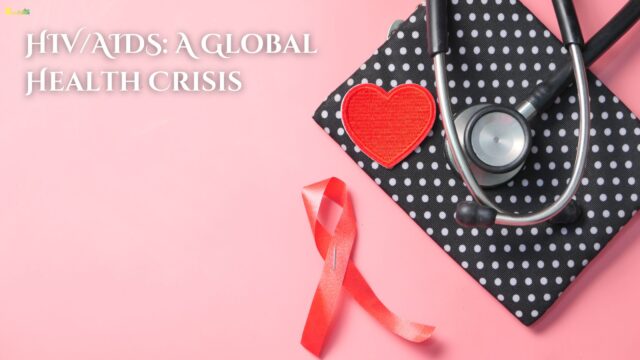HIV/AIDS, an endemic that has ravaged the world for decades, is still an urgent global health disaster. Despite huge improvements in prevention, remedy, and care, the virus keeps disproportionately affecting susceptible populations, leaving millions grappling with its devastating results.
A Brief History of HIV/AIDS
The emergence of HIV/AIDS in the early 1980s marked a turning point in worldwide health. Initially constrained to unique populations, the virus unexpectedly spread globally, claiming tens of millions of lives. The stigma and discrimination related to the disease hindered efforts to deal with the crisis, mainly marginalization and suffering.
The Global Impact of HIV/AIDS
HIV/AIDS has had a profound impact on societies internationally, leaving in the back of a trail of devastation. The disorder has pressured healthcare systems, strained economies, and disrupted families and groups. In many regions, HIV/AIDS has exacerbated existing social and monetary inequalities, further marginalizing susceptible populations.
Key Challenges in Addressing HIV/AIDS
Despite sizable progress in preventing HIV/AIDS, numerous challenges persist:
- Stigma and Discrimination: The stigma related to HIV/AIDS is still a prime barrier to prevention, treatment, and care. Discrimination primarily based on sexual orientation, gender identity, and other elements can prevent human beings from getting access to important services.
- Inequality and Marginalization: Vulnerable populations, consisting of sex people, folks who inject pills, and transgender people, are disproportionately affected by HIV/AIDS. These companies often face systemic discrimination and absence of admission to crucial services, putting them in particular at risk of infection.
- Lack of Access to Prevention and Treatment: Many people dwelling with HIV/AIDS lack admission to prevention and treatment services, in particular in low-income nations. This is because of a combination of things, which include poverty, confined infrastructure, and inadequate healthcare structures.
- Emerging Drug Resistance: The emergence of drug-resistant HIV traces poses an extensive venture to treatment efforts. This can cause remedy failure and increased mortality costs.
Strategies for Addressing the HIV/AIDS Crisis
To effectively deal with the HIV/AIDS crisis, a comprehensive and multi-faceted approach is needed. Key techniques encompass:
Prevention:
- Comprehensive Sex Education: Providing comprehensive intercourse schooling to younger humans can help them make knowledgeable choices about their sexual health and decrease the threat of HIV transmission.
- Condom Promotion and Access: Promoting and making sure to get the right of entry to condoms is important for preventing HIV transmission through sexual contact.
- Harm Reduction Programs: Harm reduction applications, such as needle change programs, can help lessen the hazard of HIV transmission among folks who inject tablets.
- Pre-Exposure Prophylaxis (PrEP): PrEP is a remedy that can prevent HIV contamination in those who are in excessive danger of publicity.
Treatment:
- Antiretroviral Therapy (ART): ART is a combination of drugs that can suppress HIV, allowing humans living with HIV to live longer, healthier lives.
- Treatment as Prevention (TasP): TasP includes treating human beings residing with HIV with ART to prevent them from transmitting the virus to others.
- Addressing Drug Resistance: Monitoring drug resistance and growing new remedy alternatives is essential for ensuring the effectiveness of ART.
Social and Structural Interventions:
- Addressing Stigma and Discrimination: Promoting human rights and the hard stigma associated with HIV/AIDS is essential for developing supportive surroundings for humans residing with the ailment.
- Strengthening Healthcare Systems: Investing in healthcare infrastructure and education of healthcare people can improve get admission to to HIV/AIDS offerings.
- Empowering Vulnerable Populations: Empowering inclined populations via schooling, monetary possibilities, and social assistance can help reduce their chance of HIV infection and improve their fine lifestyles.
Conclusion
HIV/AIDS remains a large worldwide fitness disaster, despite extensive development in prevention, treatment, and care. To effectively address this pandemic, a comprehensive and multi-faceted approach is needed that addresses the social, economic, and health-associated challenges faced using humans living with HIV/AIDS. By running collectively, we are able to create a global loss from HIV/AIDS.









